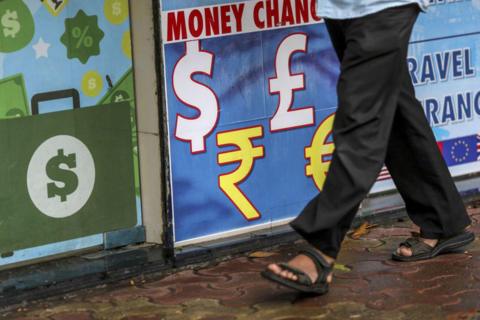Tucked deep in Donald Trump's sprawling "One, Big, Beautiful Bill Act" is a clause that could quietly take billions from money sent abroad.
It proposes a 3.5% tax on remittances sent abroad by foreign workers, including green card holders and temporary visa workers such as those on H-1B visas. For India - the world's top remittance recipient - the implications are serious, say experts. Other major recipients include Mexico, China, the Philippines, France, Pakistan and Bangladesh.
In 2023, Indians abroad sent home $119bn (£88bn) - enough to finance half of India's goods trade deficit and outpace foreign direct investment, according to a paper by Reserve Bank of India (RBI) economists. Of this, the largest share came from the US. For millions of migrants, that includes the money wired to cover a parent's medicine, a nephew's tuition or a mortgage back home.
A blunt levy on remittances could skim billions from migrant workers, many of whom already pay taxes in America. The likely result? A rise in informal, untraceable cash transfers and a dent in India's most stable source of external financing.
India has remained the top recipient of remittances since 2008, with its share rising from 11% in 2001 to 14% in 2024, according to World Bank. India’s central bank says that remittances are expected to stay strong, reaching an estimated $160bn by 2029. The country's remittances have consistently hovered around 3% of GDP since 2000.
India's international migrant population grew from 6.6 million in 1990 to 18.5 million in 2024, with its global share rising from 4.3% to over 6%. While the Gulf still hosts nearly half of all Indian migrants, skilled migration to advanced economies - especially the US - has increased significantly, driven by India's global IT footprint.
The US remains the top source of remittances worldwide, with its share rising from 23.4% in 2020–21 to nearly 28% in 2023–24, driven by a strong post-pandemic job recovery and a 6.3% rise in foreign-born workers in 2022. Notably, 78% of Indian migrants in the US work in high-earning sectors such as management, business, science, and the arts.
Remittance costs - driven by fees and currency conversion - have long been a global policy concern due to their impact on families. While global averages of the costs remain above targets, India stands out as one of the most affordable destinations, reflecting the rise of digital channels and heightened market competition.


